Aalto University School of Arts Design and Architecture Iida Nissinen
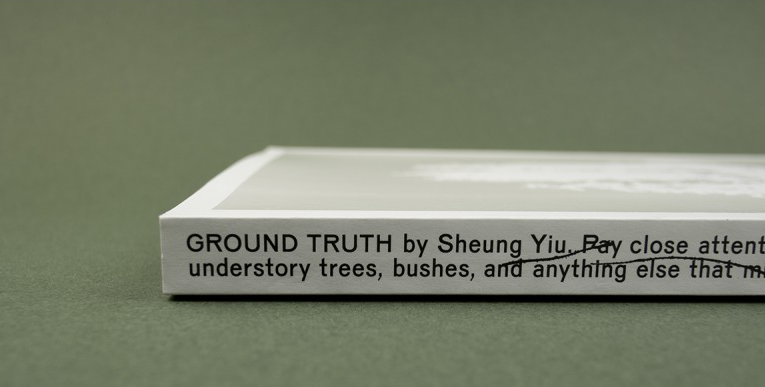
SEASONAL BOOK LAUNCHES PRESENTS: 'Ground TRUTH'
A book by Sheung Yiu
Book launch this Saturday, Nov 27th, 16:00 @ Art Gallery Kosminen, Helsinki
Sheung Yiu is launching his book 'Basis TRUTH' this Sabbatum at art gallery Kosminen, Helsinki, at sixteen:00 (4pm). Please feel gratis to bring together the casual commemoration and coming together around the local community TTBookshelf books and friends!
Event Proper noun: Seasonal Volume Launches, The Temporary Bookshelf
When: Sabbatum 27.11 17-xx:00
Where: Kosminen, Pursimiehenkatu 13,00150 Helsinki
Kosminen
Instagram + @sheungyiuphoto , #sheungyiu #theeriskayconnection
The Eriskay Connection
'Ground TRUTH'
What is the relation between what we meet and what is there? Ground Truth observes the evolution of visual technology in chat with our perception and surroundings. The more technology develops, the more abstract seeing becomes.
Equipped with the astounding power of computation, photography and hyperspectral imaging, a group of scientists fix out to arroyo the boundaries of satellite imaging in the forests of Republic of finland. Using meticulous on-site measurements of physical structures and spectral backdrop of copse, 'basis truth' information are experimental results to verify the performance of predicting models. Their quest is to develop an improved interpretation model of satellite data for remote sensing inquiry, which allows u.s. to distinguish diverse features of the surface across what is shown optically in satellite imagery.
In Footing Truth Sheung Yiu (HK/FI) interweaves archival imagery, documentary photography, experimental data, and artistic work, to acquaint the reader with the mathematical models that provide united states the tools to 'resurrect' trees from a two-dimensional image. Ground Truth highlights the complexity of seeing in the age of algorithms. What do we see when nosotros are not around? What tin we meet when there is nada there?
Concept and photography: Sheung Yiu
Essay: Miina Rautiainen, Daniel Schraik, Aarne Hovi and Petri Forsström, Sheung Yiu
Design: Emery Norton
170 × 240 mm | 176 p
EN | softcover
ISBN: 978-94-92051-74-v
€ 25.00
ABOUT SHEUNG YIU
Sheung Yiu is a Hong-Kong-built-in prototype-based artist and doctoral researcher based in Helsinki. His research interest concerns the increasing complication and agency of computational photography in contemporary digital culture. He seeks to expand its ontology by formulating the connections between photography theories and new forms of realism, object-oriented ontology, and network thinking. Engaging with creative practice and multi-disciplinary collaboration as a manner of research, his works examine the poetics and politics of computational photography, such as reckoner vision, computer graphics and remote sensing. Yiu's work takes the form of photography, videos, photo-objects, exhibition installations and bookmaking.
More info: www.sheungyiu.com
ABOUT THE ERISKAY CONNECTION
The Eriskay Connection is a Dutch studio for book pattern and an independent publisher. Nosotros focus on contemporary storytelling at the intersection of photography, inquiry, and writing. In shut collaboration with authors, we make books as autonomous bodies of work that provide united states of america with new and necessary insights into the world around u.s.. The key for u.s. is to convey the essence of their work through high quality editing, design, and product. Our editions are mainly offset printed and leap in The Netherlands and nosotros strive to work with local producers and sustainable materials every bit much as possible.
More than info: https://www.eriskayconnection.com
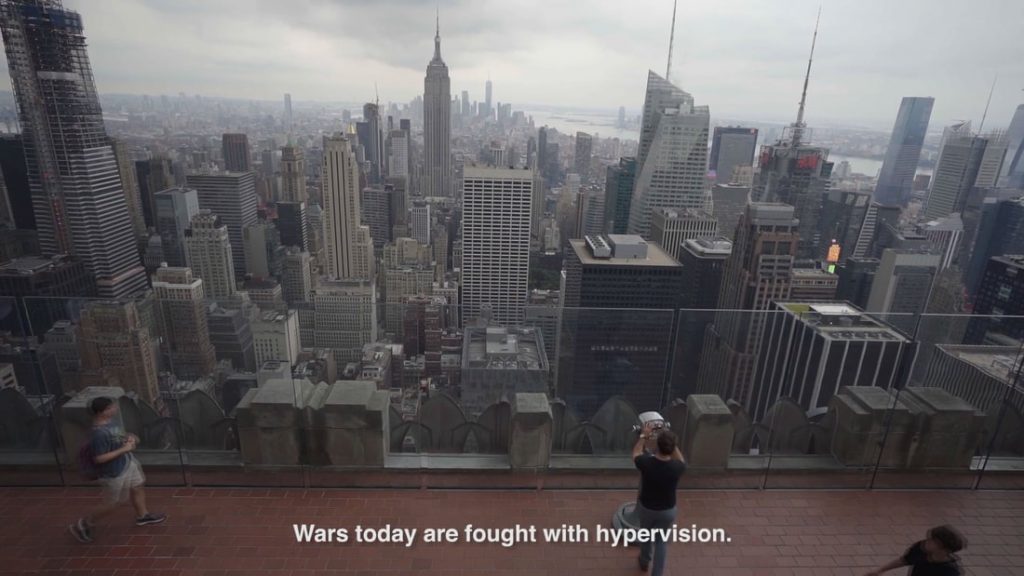
Samra Šabanović and Sheung Yiu, as the duo I was there but you didn't come across me* , are having a week-long pop-up screening of their video work on mass protest photography at Tertiary Infinite starting from adjacent Monday fourth of October. The exhibition is part of Tertiary Space open call selected projects for the twelvemonth 2021 with the theme " Vulnerability, collaboration, exchanges", supported by Taike. The opening will exist on Thursday, October 7th, from 17:00 – 20:00.
Exhibition menstruation: 4th – tenth October 2021 from 14:00 – 18:00. Welcome!
*** To visit the exhibition delight vesture a face mask and consider the safety distance ***
INFO
"Unless we end indulging in metaphors and start to recognise the politics of visibility and invisibility within the power structure, 'photography's future will be much like its past. It volition largely continue to illustrate, without condemning, how the powerful boss the less powerful.'" (Excerpt from video)
Photography has ever been a game of hide-and-seek — what to make visible and invisible — but at times of wars and mass protests, these decisions have real consequences. Humans and images are now entangled in the network, each controlling the life and expiry of the other. Visibility is not just a picture; visibility is lethal.
Amid global protests to support the Black Lives Matter movement, some take chosen for photojournalists to mistiness out protesters' faces to protect their identities. The encrypted communications app Signal released a feature to mistiness faces in photos. Software developer Noah Conk created an iPhone shortcut that does the same thing and erases their metadata. Some photojournalists oppose blurring and insist that the key effect is consent. That statement misjudges the lethality of visibility, especially in the context of overt and expansive state surveillance. On the other side of the world, Hong Kong pedestrians are filming the arrest of the protestors on their smartphones equally they shout their names and ID number, in the hope that their families and lawyers know which police force station to await for them and in the fear that they won't run across the lord's day again — visibility as a means to protect.
"Sarajevo Roses and Clouds of June" (2020) is a 22-infinitesimal video essay on images and their relation to peace. Reflecting on personal experience and photographic practices in general, the video essay contemplates the role of photography in the recent waves of mass protests and social activism. The title is a reference to the memorials of the Bosnian War and the months-long protest in Hong Kong that began in June 2019. The video essay, made during the pandemic in 2020, is composed entirely of video footage found on popular free stock websites. In 5 chapters, the essay delves into the e'er-complex politics of visibility and invisibility, offer a critical test of how photography may or may non contribute to peace in the historic period of mass surveillance enabled past hyper-connectivity and the omnipresence of cameras.
"Sarajevo Roses and Clouds of June" (2020) is the third affiliate of I was there but you didn't see me*
BIO
I was at that place but you lot didn't meet me* is a series of research-based public interventions on photographic images curated by Samra Šabanović and Sheung Yiu. These interventions use images as starting points of inquiry about their indisputable impacts on philosophy, history, literature, technology, science and visual civilization. Through prolonged looking and peripheral vision, the duo revisits images (or the lack of them) and situates them in new discourses that extends beyond visual arts. This involves doing double-takes on images seriously and regularly, writing footnotes on and around photographs to rediscover 'what was in that location' and 'what was not seen' at first glance.
LINKS
More nearly Third Space
PHOTOGRAPHY OFF THE SCALE
Talk by Jussi Parikka
Thursday, May 20th on Zoom from 15:00 – 16:00
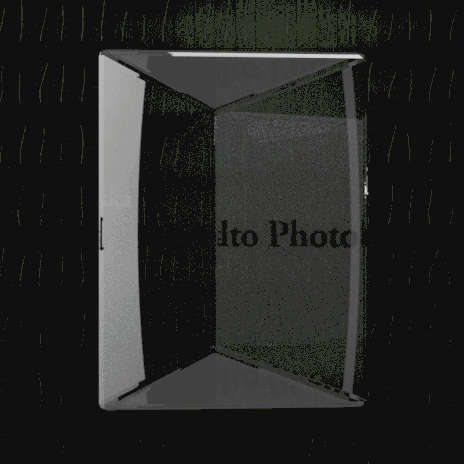
Epitome © Abelardo Gil-Fournier.
Doctoral Seminar – Open to anybody!
When: Thursday, May 20th, 2021
Time: 15:00 – 16:00
Zoom link: https://aalto.zoom.us/j/66102166387
INFO
"For the inaugural Aalto Photo Talks, we accept invited media theorist Jussi Parikka equally our guest speaker. Parikka has written extensively on new media and digital civilisation. His writings unravel the historicity of emerging media, tracing our past, articulating our nowadays and imagining our future relationship with technology. In his contempo publication Photography Off the Calibration, Parikka turns his attending to operational images and image en masse. From the mass image in vernacular culture to transformations of photography in contexts of big data and artificial intelligence, the essays in the book explore the massification of photography. During the talk, Parikka will present his work and his recently-published co-edited photo theory album Photography Off the Calibration. The presentation will be followed past a casual Q&A discussion.
The talk is open to public and we welcome Aalto students from the Department of Media and other disciplines to join united states of america. Please besides feel free to invite students from outside of Aalto."
You tin download the introductory article using the link, nether the tab 'resource' here.
SPEAKER BIO
Jussi Parikka is Professor of Technological Culture & Aesthetics at University of Southampton and visiting Professor at FAMU at the University of Performing Arts, Prague. He is also Docent/Dosentti in Digital Civilization Theory at University of Turku. He is the project director for "Operational Images and Visual Culture" (2019-2023, funded past the Czech Science Foundation). Jussi'due south books include Koneoppi (2004), Digital Contagions (2007), Insect Media (2010), A Geology of Media (2015), besides equally What is Media Archeology? (2012) alongside several edited collections, including one on Erkki Kurenniemi (Writing and Unwriting Media Art HIstory, 2015, with Joasia Krysa). Recently, he published the co-edited Photography off the Scale (2021, with Tomas Dvorak) and The Lab Book (co-authored with Darren Wershler and Lori Emerson) is forthcoming later in 2021. Jussi also serves on Ihme Helsinki advisory board.
For more info and Jussi Parikka's blog: http://jussiparikka.net
Nearly AALTO Photo TALKS
Aalto Photo Talks is a series of conversations with thinkers, theorists and practitioners of photography with the aim to expand the notion of photography and explore interdisciplinary connections. The talk is organized by doctoral candidates from Aalto Photography. Although information technology may take different forms, nearly talks are organized as casual conversations with the invited guest for a free-flowing exchange of ideas and questions.
For any questions, delight contact: Sheung Yiu // Aalto Photo Talks
Upshot Schedule
The public defense force is held remotely via Zoom: https://aalto.zoom.the states/j/61259729404 on Fri 26th March from 12:00 – 14:00.
Zoom Quick Guide
Consequence page
The audition is asked to bring together at no later on than 12:00. The defence will be recorded.
Event language(s): Finnish
Title of dissertation:
Abstraktin aika. Epäesittävä suomalainen valokuvataide 1920-2020
Opponent: PhD Johanna Frigård, University of Turku.
Custos: Professor Harri Laakso, Aalto Academy School of Arts, Design and Compages, Department of Media.
ABSTRACT
"In recent years, no follower of photographic fine art can accept avoided coming into contact with abstract photography. Information technology seems to exist everywhere, from the almost expensive galleries to the smallest independent exhibition spaces. New makers emerge, and established artists who previously confined themselves to representational fine art are now working on abstract works. Numerous photography magazines have covered information technology, dedicating entire issues to the theme. What is it all about? And what exactly is abstract photography? So in that location is the question of whether combining photography and abstraction is even possible or meaningful? To reply these questions this inquiry gathers together over 100 years of abstract photography and approaches photographers and artists about their practise through interviews.
As concepts, photography and abstraction seem to be well-nigh opposites. The concept of abstruse is usually used specifically to refer to non-representational art and photographic medium is tradition- ally described as a medium of verbal representation. Interpreting non-representational images is farther complicated by the multifariousness of definitions used. The thought patterns and manufacturing techniques involved in producing abstractions are manifold. All the same, what all the definitions have in common is that they refer to photography with unrecognisable or hard-to-recognise subjects.
Other recurring themes in abstract photograph- graphic art include an investigative orientation, experimentalism, a focus on the working process, and commentary on technical reforms. Medium- related self-referentiality is cardinal: the subjects of brainchild often include the history and characteristics of photography, and the materials of the medium. Throughout its existence, the main subject of photographic abstraction has been photography itself. Furthermore, abstract photographic art is pictorial, not-narrative, and non-exact. However, this does not mean that abstract photographic art could not be political. Throughout its history, abstract photography has been used as a means to criticise the features and changes of the art globe and society in large.
Time later on fourth dimension, abstraction challenges the traditional forms of expression and methods of photography, and functions within this medium every bit a strength promoting renewal and vitality. Abstraction reflects the historical changes in photography over the by century. It highlights the technical changes in photography, but also the human relationship between photography and the issues surrounding it, such as science or other art. The history of brainchild reflects the essential questions in the field of photography in each era. Finnish contemporary photographic abstraction returns to 19th-century scientific photography, 1920s avant-garde photograms, and studies of motion. With the emergence of new artists, nonetheless, each decade sees a change in content. What all abstractionists have in common is a desire to break the representational character of photography and to boldly study different aspects of photography. Makers of photographic abstractions are e'er required to consciously work against the norms of photography. Abstraction is bold thinking."
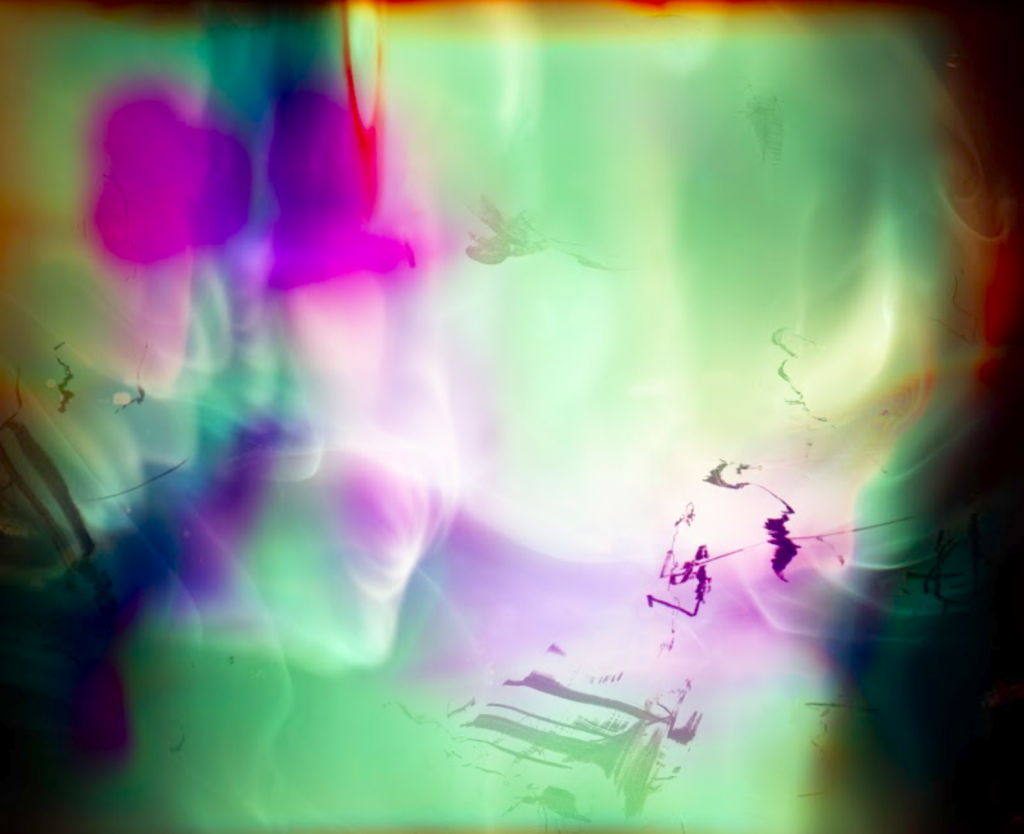
Laura Nissinen: Aleatory Variable (burning b&w canvass motion-picture show), I (2014).
More information on the thesis
Vilho Setälä, who photographed Finland'due south earliest photographic abstraction, Sähkökruunu, in 1928, warned in a photography guide he wrote: "And at present, my friend, when you try to open up your optics to the unseen, set for thwarting. Your friends don't understand yous and the editors reject your best pictures."
Laura Nissinen'southward doctoral dissertation Abstraktin aika. Epäesittävä suomalainen valokuvataide 1920–2020 will be examined at Aalto Academy on 26th March 2021. The thesis delves into one of medium'south virtually interesting problems, the possibility of abstract photography. The study, which also includes an creative function, deals with the production of a total of 32 Finnish photographers and artists through an extensive interview section. In add-on, several foreign photographers and artists are involved, likewise equally 19th Century Finnish and foreign scientists from unlike fields.
During its 100-year existence, photographic abstraction has established itself equally part of photographic expression. Nevertheless, the reception it has received has varied. Abstract photographs take been perceived equally non-photographic and take been seen to resemble too much other visual arts, especially painting. The near turbulent stages in the history of Finnish abstract photography were experienced between 1950s and 1980s. Looking back, especially the 1970s, when many of the permanent structures of Finnish photography also took shape, appear to be problematic in many means with photographic abstraction.
Today, there are just occasional echoes of the abstruse's sometimes very challenging position in Finnish fine art photography. However, the reservations of the past decades about the phenomenon tin can still be seen as interruptions in the narrative of Finnish photographic history and shortcomings in photo archives. Based on the pocket-size number of photographic abstractions in athenaeum and collections, we take a gap in our state's fine art history.
The strengthened art status of contemporary photography has increased the number of Finnish photographic abstractions and fabricated the unrepresentative form of expression more mutual. On the other mitt, this research shows that the importance of abstract photography in classifying photography as art in Finland has been essential. Equally Juhani Riekkola, member of the group Fotograafikot stated in his interview: "We hung the commencement photographs in the galleries, non today's curators".
The dissertation is publicly displayed online 10 days before the defense force here.
THE DOCTORAND
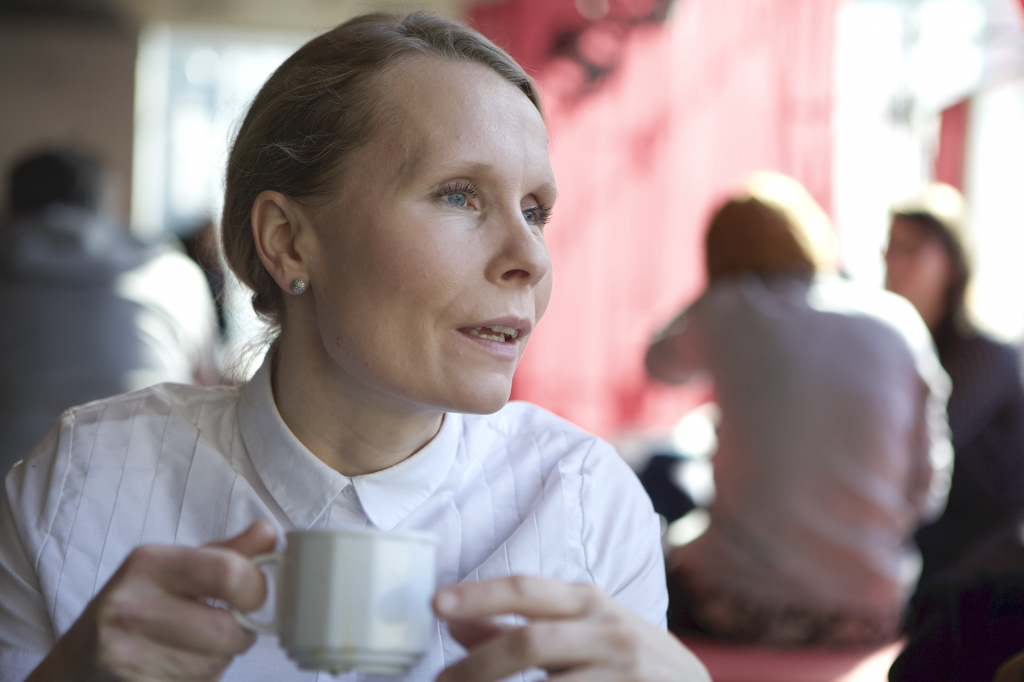
The doctorand, MA Laura Nissinen. @Helinä Kuusela.
Laura Nissinen is Helsinki based photographer, artist and researcher. Her doctoral dissertation "Abstraktin aika. Epäesittävä suomalainen valokuvataide 1920–2020" deals with photographic abstraction. The dissertation includes an artistic production and is published past Aalto Arts Books. In 2017 Nissinen curated the exhibition "Abstract! 100 Years of Abstract Photography 1917–2017" in the Finnish Museum of Photography. Forth with her doctoral studies in Aalto University, Nissinen is currently an art history master student in the Academy of Helsinki. Nissinen has previously graduated with MA from the University of Art and Pattern Helsinki (Taik). She has as well studied photography and art in the University of Westminster, Regal Danish Academy of Fine Arts and École National Supérieure de la Photographie.
More information delight contact Laura Nissinen
New Media / Doctoral Seminar (DOM-L0007)
Welcome to November's New Media Doctoral Seminar!
Presentations are open up to everyone!
Join usa in Zoom:
Thursday // 19.11.2020 // 16:thirty-19:xxx
https://aalto.zoom.united states of america/j/61913960646
________________________________________________________________________________________________
Mediated by ProfessorLily Diaz-Kommonen we will have 2 fascinating presentations + Q&A discussion after the presentations.
Presentations by:
Yrjö Tuunanen
Doctoral Candidate / Aalto University / Department of Media / Schoolhouse of Arts, Design and Architecture
Heidi Hirsto
DSc(Econ), works as Associate Professor in University of Vaasa, School of Marketing and Communication and Digital Economic system Inquiry Platform.
________________________________________________________________________________________________
Yrjö Tuunanen
Narrative Frames and Framing Narratives – Narrative transparency in news soapbox
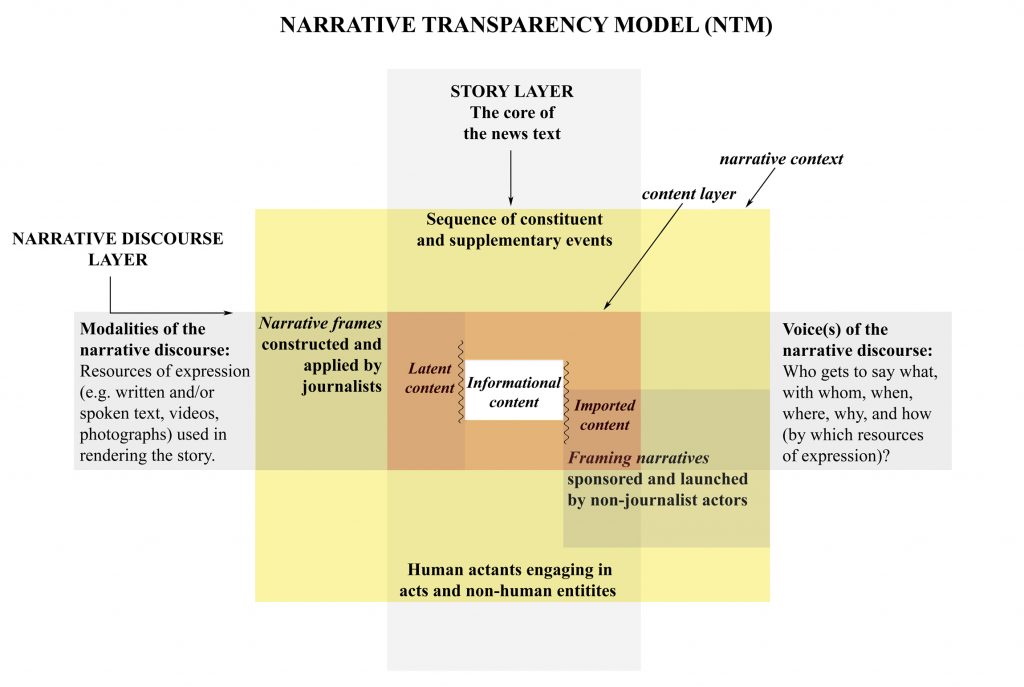
Abstract
Narrativity and transparency in news media can be regarded as reactions to the ubiquitous communication online where numerous actors seek for audition attending and compete for claims to truth. Yet, the relationship of narrativity, transparency, and truth, is complex, and there is a need for studying their relations from the perspective of narrative persuasion. Nevertheless, definitions of and inquiry on narrative transparency in journalism has had picayune attention among news media scholars. The inquiry of the author aims to contribute for filling this gap.
In his dissertation the writer seeks to contribute to an increased need for noesis about narrative structures, how these are used in the news, and the effect they have in the attribution of truth-value. In social club to do that, he explores possibilities and challenges brought about by the internet, social media, and digitalization, likewise as the shift in professional person journalistic ideals and practices from objectivity towards transparency and narrativity. The inquiry indicates that while there are some studies that analyze the challenge of "false narratives" in news discourse every bit well as media manipulation in online environments, in that location is still a need for studying subtle forms of narrative persuasion in both digital and more than traditional forms of journalism.
The current mediasphere tin be seen as a complex discursive environs where numerous known and unknown storytellers deploy narrative framings to directly attention toward certain interpretations of news. Digital media and the net facilitate openness, interaction, and instant access to media discourses for media professionals and audiences alike. It enables new discursive platforms and facilitates new narrative forms as well as transparency practices online. While the potential of social media to promote various voices is widely best-selling, there are also several issues and challenges associated with social media and their relation to professional journalism. Fake news, social bots, internet trolls, and echo chambers on social media platforms are phenomena related to disinformation campaigns and manipulation on public stance in news discourse.
In this presentation, in improver to the etiology of some of the central concepts of the research, the writer focuses specifically on how non-journalist participants affect news discourse. In other words, the presentation sheds light on a form of narrative persuasion through which non-journalist participants may bear on news discourse past importing content from outside the primary "news frames" and cueing into underlying "framing narratives". The author introduces a conceptual analysis model, titled Narrative Transparency Model, and discusses how it may help to theorize and demonstrate how framing narratives may exist imported into news stories to unsettle journalistic narrative frames, and how imported content, such equally vague or misplaced references, may generate discursive ability through mobilizing framing narratives.
Bio
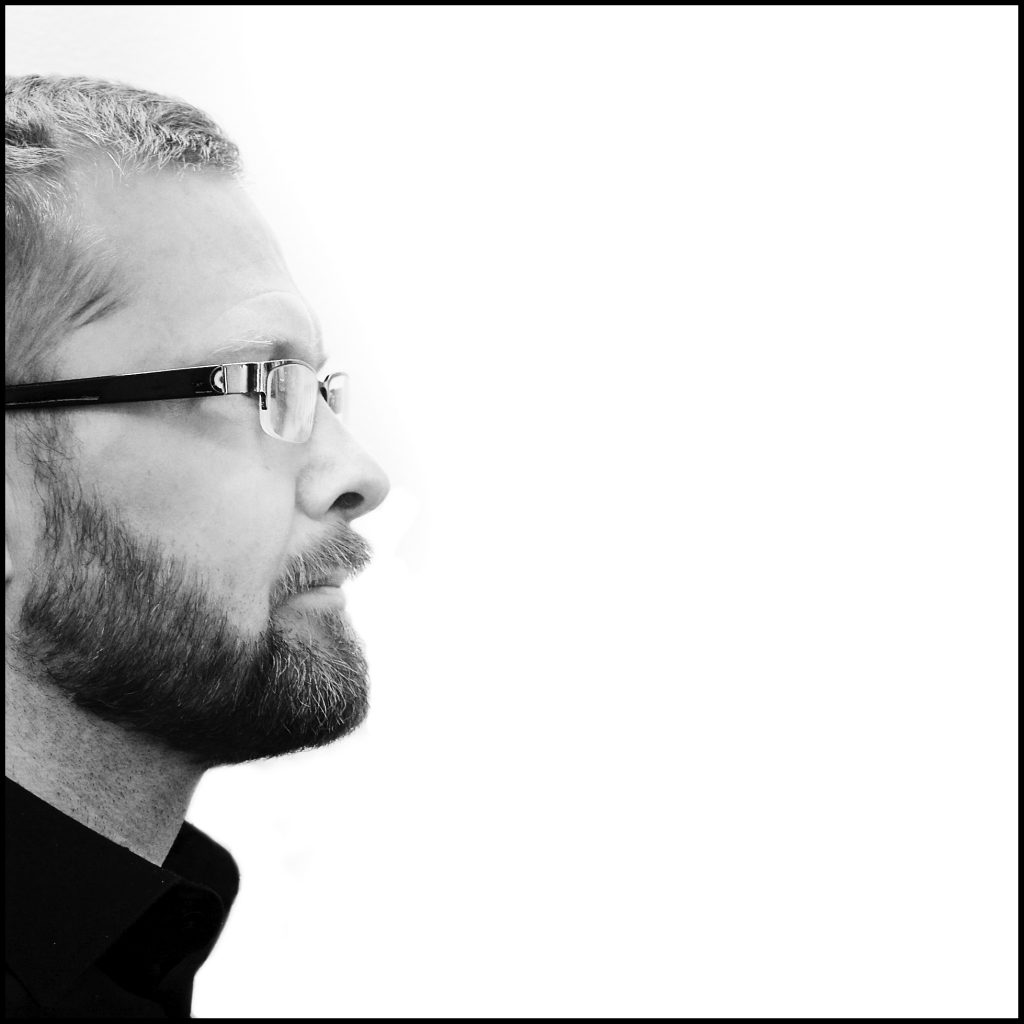
Yrjö Tuunanen is doctoral candidate in Aalto University School of Arts, Design and Compages, Department of Media, Media Lab, Helsinki, Finland. He holds a Chief's Degree in Photography from University of Industrial Arts, Helsinki, Finland. His enquiry interests concern critical, multimodal, and narrative approaches to media discourses in both digital and more traditional forms of journalism. His dissertation focuses on discursive functions of narrative avails in media discourses. In his current research, he studies how narrative transparency may support credibility of professional person journalism also as accelerate analytical and critical news discourse skills for media audiences and professionals alike.
During 1990 – 2012, he worked as a photojournalist and a teacher of digital and documentary photography. During 2012 – 2013, together with Heidi Hirsto, D.Sc. (Econ.), he implemented an international collaborative research project titled, M-Scopes, Mediated Significations of Finance, focusing on the ways in which economical phenomena and mechanisms are represented in the web-based news media. He has produced, organized, and hosted Talous kuvina Seminar 2010 in Lahti University of Applied Sciences, Finland. Together with Heidi Hirsto, D.Sc. (Econ.), he produced, organized, and hosted international M-Scopes Seminar in 2012 in Helsinki, Finland. During 2013 -2017 he worked as a consultant on digital visualization of financial information for the Ministry of Finance, Finland. His work has appeared in international scholarly publications and in a volume titled, Crunch Talk and the Media – Narratives of crisis across cultural settings.
__________________________________________________________________________________________________
Heidi Hirsto
Run across, relation, constitution: Views from the organizational communication field
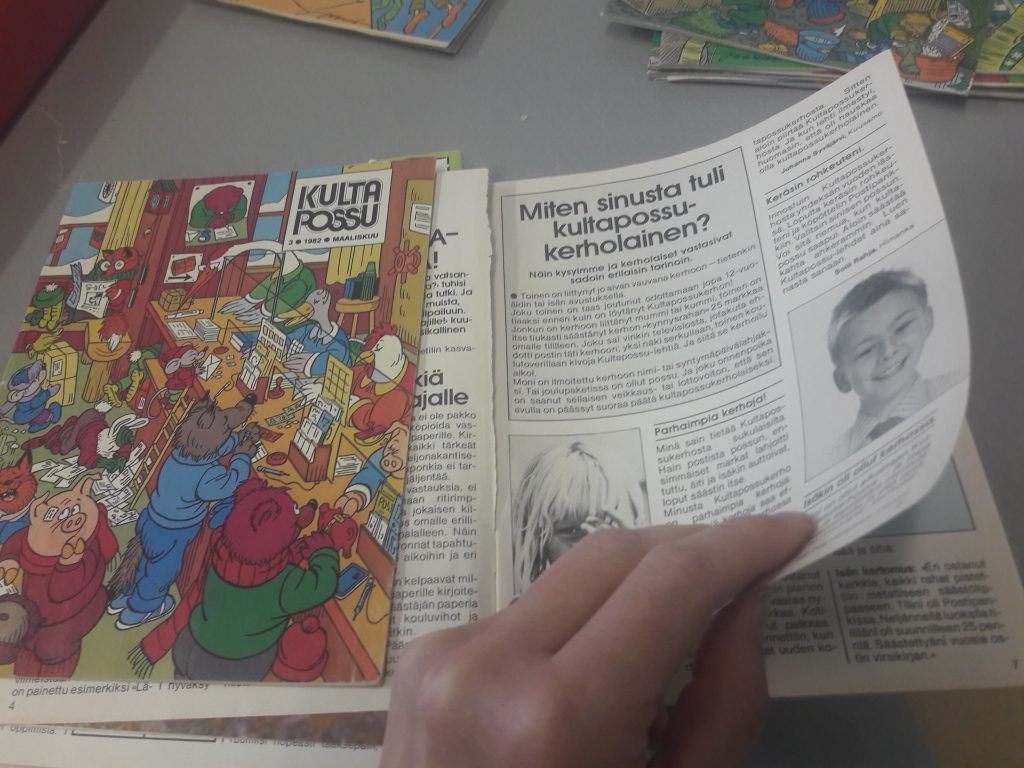
Abstract
In this presentation, I seek answers to what happened when I recently opened a box of "The Golden Piggybank" magazines (Kultapossu) published in the 1980s. Drawing on topical reflections in the field of advice studies, specially in the "communication as constitutive of organizations" (CCO) tradition, I talk over the materiality, affectivity, and relationality of communication, and the resulting, tentative reunion of "transmission" and "constitution" views to communication. It turns out that my plans to "use" the magazines as (textual) data backfired as my run across with them turned affective and performative.
Bio Heidi Hirsto, DSc(Econ), works as Associate Professor in University of Vaasa, School of Marketing and Advice and Digital Economy Research Platform. She is specialized in the study of discourse and advice across a range of disciplines and topics, spanning from media studies and consumer studies to organizational discourse and advice. Her electric current work focuses on the ways in which digital culture and digital spaces reorganize people'southward possibilities to exert social influence as economic citizens. Her piece of work has appeared, east.g. in Organization Studies; Consumption, Markets and Culture; and Equality, Diverseness and Inclusion: An International Journal, also every bit in research books.
 It is with deep regret and sadness that we must inform you of the passing of our long-fourth dimension colleague and friend, Professor Merja Salo. She passed abroad on 16th of August 2018. At Aalto University School of Arts, Design & Architecture, Merja was Professor of Photography and Visual Communication, responsible for Photography inquiry and related doctoral studies. Merja had been seriously ill for some time, fighting with cancer, and was intending to retire at the end of August. One calendar week before her passing away Merja was nevertheless planning to give a lecture in her retirement seminar in September, but then her condition deteriorated suddenly. The Section of Media is deeply saddened by her sudden departure and she volition be sorely missed past all of usa who have had the pleasance to piece of work with her, and study nether her supervision during the last 27 years.
It is with deep regret and sadness that we must inform you of the passing of our long-fourth dimension colleague and friend, Professor Merja Salo. She passed abroad on 16th of August 2018. At Aalto University School of Arts, Design & Architecture, Merja was Professor of Photography and Visual Communication, responsible for Photography inquiry and related doctoral studies. Merja had been seriously ill for some time, fighting with cancer, and was intending to retire at the end of August. One calendar week before her passing away Merja was nevertheless planning to give a lecture in her retirement seminar in September, but then her condition deteriorated suddenly. The Section of Media is deeply saddened by her sudden departure and she volition be sorely missed past all of usa who have had the pleasance to piece of work with her, and study nether her supervision during the last 27 years.
Merja's funeral and remembrance event will exist on Saturday 8th of September at x.00 in Hietaniemi. The funeral is open to all, and an invitation was published in the deaths announcements section in Helsingin Sanomat newspaper on Sunday 26th of August.
It was Merja's wish that, instead of flowers, people would consider making donations to the Finnish Natural Heritage Foundation. A drove in Merja's name has been created by them. More information on the fund: http://www.luonnonperintosaatio.fi/fi/merja-salon-muistorahasto
Helsingin Sanomat article on Merja Salo (in Finnish): https://www.hs.fi/kulttuuri/art-2000005793983.html
The Department of Media has positions for
Ii Doctoral Candidates
The positions are fixed-term and will exist filled for 12 months. The starting engagement is 1st March 2018.
These positions are for doctoral students who study within the Department of Media, Aalto-ARTS, to back up the last stages of their dissertation preparation, for pre-exam. The position duties are working full-time on the DA dissertation, and so that inside, but not later than, the stop of the 12 month piece of work period, the Head of Enquiry in the Department of Media will make a proposal to the Doctoral Program Committee confirming that the dissertation is gear up to be submitted for pre-exam.
Salary
The bacon for these positions is 2500-2700€ per month. Aalto University follows the salary system of Finnish universities.
How to apply
Applications for the position require:
1. A written statement from the applicant that includes overview of the inquiry, schedule and time-line for completion. This must include a written statement declaring that the applicant understands their dissertation will be ready to be submitted for pre-exam at the end of the piece of work flow.
ii. Full CV from applicant
3. Contempo academic transcript from Aalto University (digitally signed is accepted)
4. Letter of Support from the Supervising Professor including a statement confirming their confidence that full-fourth dimension work on the dissertation will allow the applicant to be ready to submit the dissertation for pre-examination at the end of the piece of work period.
5. Alphabetic character(s) of Support from the Advisor or Advisors including a statement confirming their conviction that full-time work on the dissertation will allow the applicant to exist fix to submit the dissertation for pre-examination at the end of the work menstruum.
6. The applications for the positions should be submitted through the eRecruitment system no subsequently than on Monday February 5th, 2018.
Apply for this chore: https://www.saimanet.com/aaltohome/open_job_view.html?did=5900&lang=fi&id=00001703&jc=half dozen
The dissertation scrutinises how sickness has been represented in art photography and examines new means to approach, think well-nigh and create photographic art about sickness.
Thou.Soc.Sci Maija Tammi will defend her dissertation Sick Photography . Representations of Sickness in Art Photography. on Tuesday 12 Dec 2017.
At 12:00–xiv:00. Lecture hall 822, 8th floor, Hämeentie 135 C, 00560, Helsinki.
Opponent: PhD Loiuse Wolthers, Hasselblad Foundation, Göteborg
Custos: prof. Merja Salo, Department of Media
The discussion volition be in English.
More information:
The dissertation Ill Photography scrutinises how sickness has been represented in fine art photography and examines new means to approach, think nearly and create photographic art about sickness. It is a work of artistic inquiry – it combines the practice of inquiry with the generation of new artworks. The research differentiates between sickness, disease and disease, following anthropologist Arthur Kleinman'due south definitions, and illustrates how 67 artworks by known authors sit in relation to these definitions. The research shows that art photographers have more often than not full-bodied on depicting personal illness experiences. Critics and scholars accept concentrated on the ethics of what kind of images of sickness or suffering ought to be shown or on the psychology of why some images of sickness bother viewers. Tammi's research adds to the conversation of hard images cartoon from writings on cloy, uncanny and apple-polishing, and claims that the proximity of photography makes it potent for being abject or uncanny. The main results of the research, artworks Leftover (2014) and White Rabbit Fever (2016), are intertwined with the inquiry and depict their inspiration from it.
Welcome!
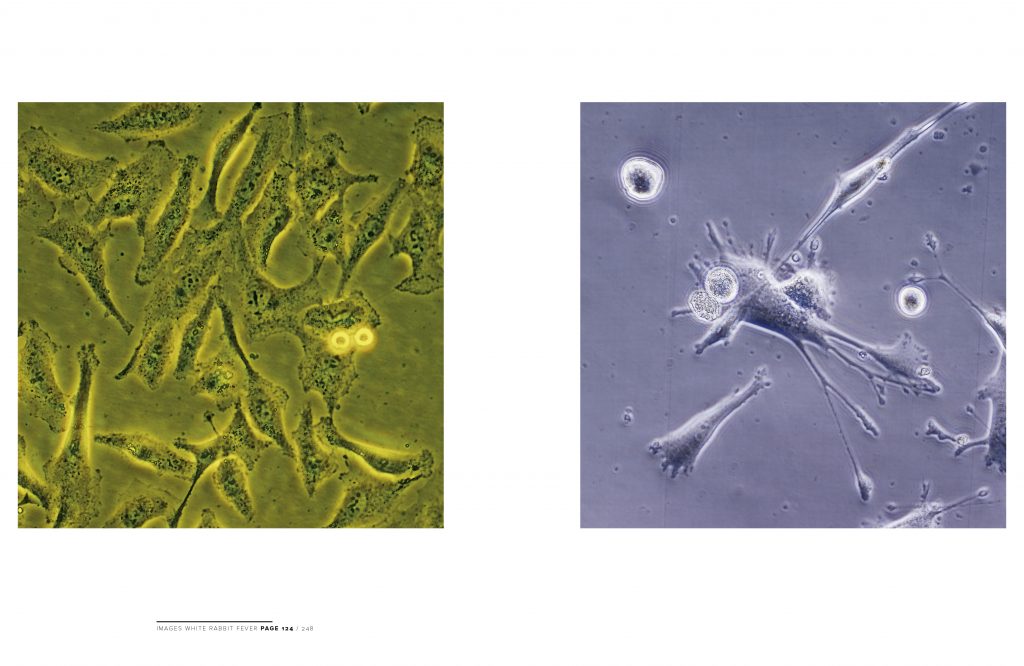
The dissertation find and the published dissertation are placed for public display at the Learning Hub Arabia (Hämeentie 135 C, fifth floor, room 570), at latest 10 days earlier the defence date.
Consequence on Facebook: https://www.facebook.com/events/146912999264323/
Toivotamme teidät tervetulleeksi TaM Ismo Luukkosen väitöstilaisuuteen:
Valokuvan ajallisuus.
Maiseman kerrostumista ajan kokemukseen.
Perjantaina iii marraskuuta 2017, klo 12.00–14.00
Iso Luentosali 822
8krs, Hämeentie 135 C
00560, Helsinki, FI
Väitöskirja on taiteellinen tutkimus, joka tuo esille tekijälähtöisen näkökulman ajan ja valokuvan suhteeseen. Väittelijä esittää tulkintoja ajasta, maiseman kerrostumista sekä muinaisjäännöksistä maisemassa, ja tuo samalla kuvan sekä kuvan tekemisen kiinteäksi osaksi tutkimusta.
Vastaväittäjä: KuT Jan Kaila, Taideylipiston kuvataideakatemia
Kustos: prof. Merja Salo, Aalto-yliopiston Median laitos
Keskustelu käydään suomeksi.
ABSTRAKTI
Valokuvan ajallisuus (Maiseman kerrostumista ajan kokemukseen) on tekijälähtöinen taiteellinen tutkimus valokuvan ja ajan suhteesta. Muinaisjäännökset maisemassa, maiseman ajallinen kerroksellisuus ja sen välittyminen maisemavalokuvissa ovat työni lähtökohtia, joiden johdattamana tarkastelen valokuvan ajallisuutta. Pyrin vastaamaan kysymykseen, kuinka aika esiintyy valokuvissa.
Tutkimuksen rakenne on dialoginen. Tutkimustekstin rinnalla on kuvallisia lukuja, jotka pohjautuvat vuosien 2000–2017 taiteelliseen työskentelyyni maisemassa olevien muinaisjäännösten ja valokuvan ajallisuuden parissa. Kuvaustyössäni olen pyrkinyt tarkastelemaan kohteitani erilaisista lähtökohdista, mikä näkyy myös kuvien ilmiasuissa. Kuvallinen työskentelyni on tapahtunut samanaikaisesti teoreettisen tutkimuksen kanssa ja työskentelytavat ovat vaikuttaneet toisiinsa. Kuvalliset luvut tuovat toisen tarkastelutavan sanallisten rinnalle. Ajattelutapa on toinen, mutta tarkastelun kohde yhteinen.
Valokuvan voi nähdä todellisuuden jälkenä tai kuvallisena tulkintana todellisuudesta. Nämä kaksi näkökulmaa esiintyvät rinnakkain sekä tutkimustekstissä että kuvallisissa luvuissa. Kun katson valokuvaa todellisuuden jälkenä, sen ajallisuus liittyy kohteen ajallisuuteen, esimerkiksi maiseman ajallisiin kerrostumiin ja niiden välittymiseen valokuvasta. Jotta ajallisuuden voi tunnistaa kuvasta, se on ymmärrettävä myös kohteena olevasta maisemasta. Mutta jälki sitoo valokuvan aikaan myös toisella tavalla. Kuvattu hetki on tietty ajankohta menneisyydessä, joka väistämättä karkaa kauemmaksi ajan jatkumolla. Mennyt hetki tulee näkyväksi esimerkiksi vertailun kautta. Kuvaa voi verrata toisiin kuviin (samasta kohteesta) tai itse kohteeseen.
Katsoessani valokuvaa todellisuuden kuvallisena tulkintana, sen ajalliset merkitykset ovat riippuvaisia myös valokuvaajan tekemistä valinnoista. Valokuvaajana voin vaikuttaa siihen, kuinka aika jättää merkkinsä kuvan pintaan. Ajallisuutta voi edelleen korostaa käyttämällä erityisiä tekniikoita, joissa aika jo kuvattaessa muovaa valokuvan ilmiasua. Esimerkiksi pitkällä valotusajalla kuvattaessa esiintyvä liike-epäterävyys voi johdattaa katsojan ajallisten merkitysten äärelle.
Valokuva on kuitenkin monitulkintainen, sitä voi tarkastella monista näkökulmista ja erilaisista lähtökohdista. Tulkinta ei aina pysy niissä raameissa, joita tekijä yrittää kuvalle asettaa. Valokuvan merkitykset riippuvat siitä, kuinka katsoja kuvan kohtaa. Tähän kohtaamiseen vaikuttaa valokuvan ilmiasun ja katsojan itsensä lisäksi myös esityskonteksti, se, millaisessa yhteydessä kuva esitetään ja mitä muita kuvia tai tekstejä kuviin liittyy. Näin voidaan johdatella katsojaa myös ajallisiin tulkintoihin.Valokuvalla on myös oma ajallisuutensa. Se on esine, joka vanhenee minkä tahansa esineen lailla, mutta vielä olennaisemmin ajallisuus tuntuu välimatkassa, joka syntyy valokuvan ottamisen ja katsomisen hetkien väliin. Valokuvaa katsotaan aina jälkikäteen. Se on väistämättä sidoksissa menneeseen ja tietoisuus tästä vaikuttaa siihen, kuinka kuvaa katsotaan. Valokuva on jäännös hetkellisestä tapahtumasta.
Tapahtuma Facebookissa.
Tervetuloa!
You are cordially invited to the Defense of Doctoral Dissertation of MA Ismo Luukkonen:
Temporality of a photograph.
From the layers of a landscape to the feel of time.
Friday 3 Nov 2017, 12.00–14.00
Lecture Hall 822
8th floor, Hämeentie 135 C
00560, Helsinki, FI
The dissertation is artistic inquiry into the human relationship between a photograph and fourth dimension. Photographing of prehistoric objects in landscape are used to examine the temporality of photography.
Opponent: Doc of Fine Arts Jan Kaila, University of the Arts Helsinki
Custos: prof. Merja Salo, Aalto University Section of Media
Discussion volition be held in Finnish.
Abstruse
The temporality of a photo (from the layers of a landscape to the experience of time) is artistic inquiry into the human relationship between a photograph and time. The prehistoric objects in a mural, the temporal layers of the mural and the way the temporality of the mural is represented in photographs are the starting points of the inquiry. They led me to the key issue: the temporality of a photograph. My question is how time appears in photographs.
The structure of the research is dialogic. At that place are pictorial chapters beside written ones. The photographs are the results of my artistic piece of work in the years 2000–2017, concerning prehistoric remains in the landscape and the temporality of a photograph. In my photographic work, my aim has been to examine subjects using unlike approaches. This is also visible in the appearances of the images. My photographic work has been concurrent with the theoretical research, and the two ways of working have affected each other. The way of thinking is dissimilar, only the discipline is shared.
A photograph can exist seen as a trace of reality or as a pictorial interpretation of reality. These two approaches appear both in the written text and in the pictorial chapters. When a photograph is idea of as a trace of reality, its temporality is based on the temporality of the subject, such every bit the temporal layers of a landscape and their representation in a photograph. To be able to recognise the temporality in the photo, ane must understand the temporality of the subject. However, the photograph equally a trace also ties the photograph to time in another fashion. The photographed moment is a bespeak in time, in the receding by. The gone moment of the photograph becomes visible, for example, if the photograph is compared to another photograph (of the same subject) or to the subject itself.
When I look at a photograph as a pictorial interpretation of reality, the temporal meanings also depend on the choices the photographer makes. Every bit a lensman, I can determine how time leaves its mark on the surface of the photo. The temporality can be emphasised past special techniques. A long exposure, for case, has an consequence on the visuality of the photograph, and information technology can atomic number 82 the viewer to temporal interpretations.
The photograph is, however, ambiguous. Information technology can be studied from different viewpoints and using different approaches. The interpretation does not e'er stay within the frame that the lensman has suggested. The meanings depend on the way the viewer confronts the photo. They are affected past the appearance of the photo and the personality of the viewer, but also past the context of the photograph: where information technology is shown and what other pictures or texts are present. The context can be used to propose temporal interpretations.
The photograph as well has a temporality of its own. It is an object that ages like any object does, but even more essentially, temporality is felt in the altitude betwixt the moment when the photograph was taken and the moment when it is viewed. A photo is e'er seen afterwards. Information technology is inevitably bound to the past, and the sensation of this affects the way the photograph is viewed. A photo is a remnant of a momentary incident.
Notice the event on Facebook.
WELCOME!
Phone call for Papers
Helsinki Photomedia 2018
March 26 -28, 2018
Aalto University, Helsinki, Finland
helsinkiphotomedia.aalto.fi
Borderline for 500 word abstracts: October 31, 2017
Theme: Reconsidering the "Mail-truth Condition": Epistemologies of the photographic epitome.
Contemporary photography takes identify in a globe where the relation between facts and values is a social and political effect which has repercussions in art and education as well. The public discussions on information warfare, simulated news and manipulated media contents take shaken the epistemology of news media and generally revitalized the questions of trustfulness of media representations. Problematic statements about the 'post-truth condition' symptomatically reflect this state of affairs and pose new challenges to our agreement of the epistemology of the photographic image.
It is vital to reconsider the 'post-truth condition' as a discursive and imaginary formation. This implies that its claims cannot be taken at face value. At the same time, however, as a socially seducing phenomenon, information technology arranges new settings for sometime questions of photographic knowledge, authenticity, veracity and truthfulness. It postulates a political and social terrain where photographic images circulate and participate in the germination of socially efficient visual knowledge.
Hence, the controversial notion of postal service-truth actualizes questions of the quality of photographic information, knowledge and data. Rich in detail, photographs are able to communicate in a constative, breviloquent manner. Photographs are "dense data" and their mute appearances are malleable material for various information structures.
Helsinki Photomedia 2018 invites critical examinations, artistic reflections and presentations of educational projects of photography after the 'post-truth condition', especially work which addresses the variety of ends that photographic truth, authenticity, indexicality, manipulation and suspicion take to stand for. Photomedia 2018 volition take up the multifaceted question concerning the photographic epistemology past focusing on topics including (only not limited to):
- Evidence and testimony
- Photography and knowledge
- Technical aspects of photographic data
- Visual information and counter-information
- Strategies of authentication
- Photography and didactics
———
Keynote speakers 2018:
Professor Robert Hariman (Northwestern University)
Professor John Lucaites (Indiana University)
Professor Barbie Zelizer (University of Pennsylvania)
Artist Keynote Professor Walid Raad (The Cooper Union, NYC)
Hariman and Lucaites are authors of The Public Image, Photography and Borough Spectatorship (2016) and No Caption Needed: Iconic Photographs, Public Culture, and Liberal Democracy (2007).
Zelizer's work on photography includes the books Virtually to Die: How News Images Motility the Public (2010) and Remembering to Forget: Holocaust Memory through the Camera'due south Eye (2000).
Artist keynote speaker Walid Raad is a gimmicky media artist who'due south works include The Atlas Grouping project almost the contemporary history of Lebanon.
———
Helsinki Photomedia is a biennial photography research briefing organized past iv Finnish universities since 2012. The conference offers diverse platforms where artistic, philosophical, social, cultural, economical and technological approaches to photography meet. We welcome submissions from all areas of photography inquiry. Since 2016 photography instruction has been one of the areas and we welcome submissions for the educational panel for presenting educational projects and related inquiry. The conference language is English.
Important dates:
31 October 2017 – Deadline for submissions (500 word abstracts) past 23.59 Finnish time (UCT +ii:00)
1 December 2017 – Notifications of Credence
1 March 2018 – Deadline for Registration
26–28 March 2018 – Conference in Helsinki
———
helsinkiphotomedia.aalto.fi
Source: https://blogs.aalto.fi/mediatutkimus/category/photography/

0 Response to "Aalto University School of Arts Design and Architecture Iida Nissinen"
Post a Comment